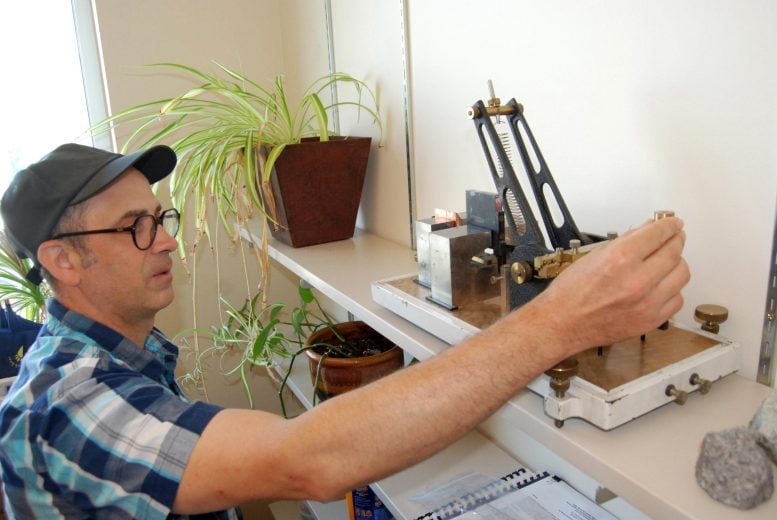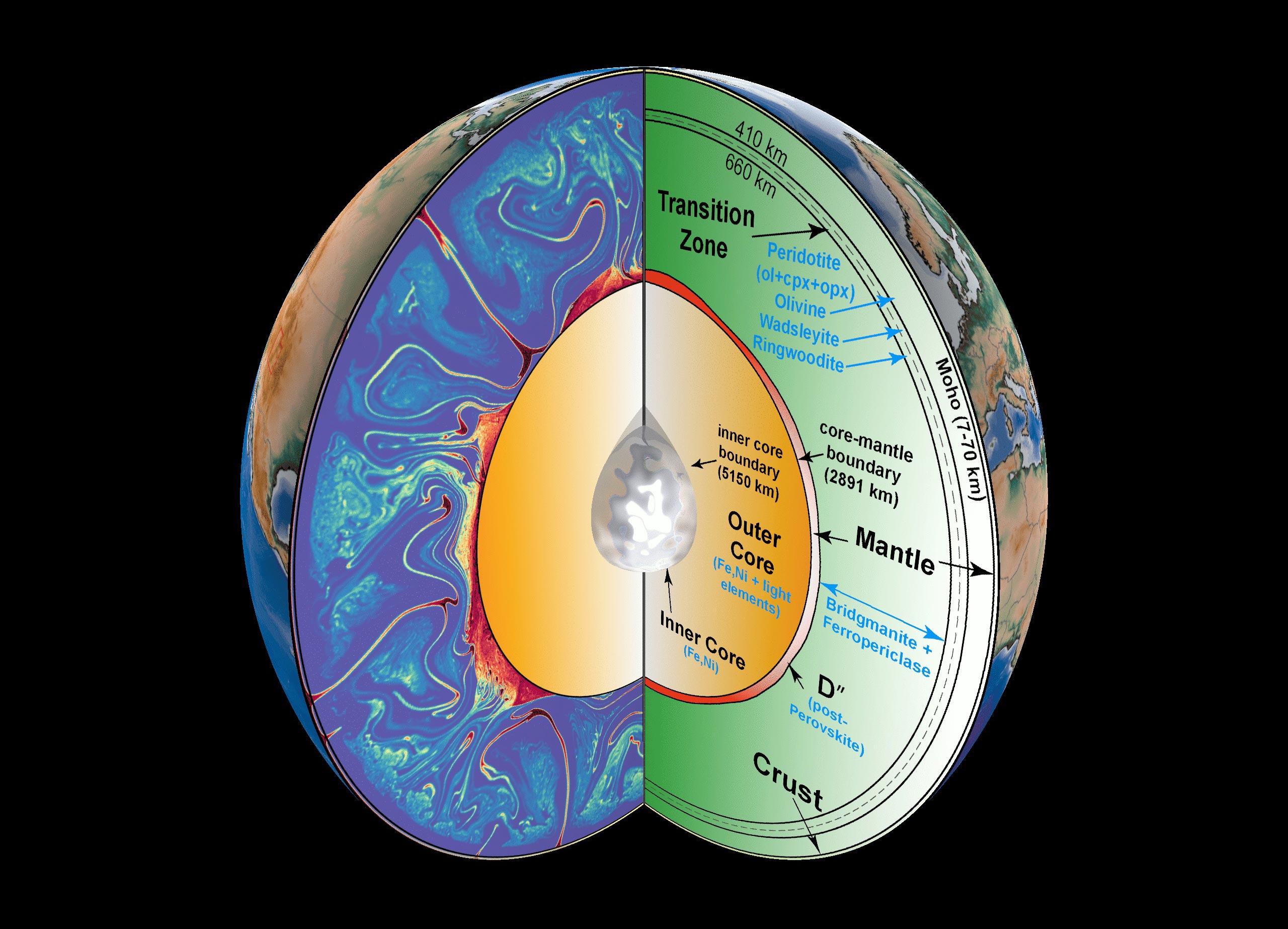Geophysicists find link between seismic waves called PKP precursors and anomalies in Earth’s mantle.
A new study reveals that PKP precursor seismic signals, which have mystified scientists for years, originate from ultra-low velocity zones deep beneath North America and the western Pacific. These findings by University of Utah researchers connect these zones to significant geological features like hotspot volcanoes, using advanced seismic techniques to trace their origins back to the core-mantle boundary.
PKP Precursors and Seismic Mysteries
For the decades since their discovery, seismic signals known as PKP precursors have challenged scientists. Regions of Earth’s lower mantle scatter incoming seismic waves, which return to the surface as PKP waves at differing speeds.
The origin the precursor signals, which arrive ahead of the main seismic waves that travel through Earth’s core, has remained unclear, but research led by University of Utah geophysicists sheds new light on this mysterious seismic energy.
PKP precursors appear to propagate from places deep below North America and the western Pacific and possibly bear an association with “ultra-low velocity zones,” thin layers in the mantle where seismic waves significantly slow down, according to research published on August 10 in AGU Advances, the American Geophysical Union’s lead journal.

Linking PKP Precursors to Geological Features
“These are some of the most extreme features discovered on the planet. We legitimately do not know what they are,” said lead author Michael Thorne, a U associate professor of geology and geophysics. “But one thing we know is they seem to end up accumulating underneath hotspot volcanoes. They seem like they may be the root of whole mantle plumes giving rise to hotspot volcanoes.”
These plumes are responsible for the volcanism observed at Yellowstone, the Hawaiian Islands, Samoa, Iceland and the Galapagos Islands.
“These really, really big volcanoes seem to persist for hundreds of millions of years in roughly the same spot,” Thorne said. In previous work, he also found one of the world’s largest known ultra-low velocity zones.
“It sits right beneath Samoa, and Samoa is one of the biggest hotspot volcanoes,” Thorne noted.
Advances in Seismic Wave Analysis
For nearly a century, geoscientists have used seismic waves to probe Earth’s interior, leading to numerous discoveries that would not be otherwise possible. Other researchers at the University of Utah, for example, have characterized the structure of Earth’s solid inner core and tracked its movement by analyzing seismic waves.
When an earthquake rattles Earth’s surface, seismic waves shoot through the mantle—the 2,900-kilometer-thick dynamic layer of hot rock between Earth’s crust and metal core. Thorne’s team is interested in those that get “scattered” when they pass through irregular features that pose changes in material composition in the mantle. Some of those scattered waves become PKP precursors.
Thorne sought to determine exactly where this scattering happens, especially since the waves travel through Earth’s mantle twice, that is, before and after passing through Earth’s liquid outer core. Because of that double journey through the mantle, it has been nearly impossible to distinguish whether the precursors originated on the source-side or receiver-side of the ray path.
Innovative Research Techniques in Seismology
Thorne’s team, which included research assistant professor Surya Pachhai, devised a way to model waveforms to detect crucial effects that previously went unnoticed.
Using a cutting-edge seismic array method and new theoretical observations from earthquake simulations, the researchers developed, they analyzed data from 58 earthquakes that occurred around New Guinea and were recorded in North America after passing through the planet.
“I can put virtual receivers anywhere on the surface of the earth, and this tells me what the seismogram should look like from an earthquake at that location. And we can compare that to the real recordings that we have,” Thorne said. “We’re able to now back project where this energy’s coming from.”
Their new method allowed them to pinpoint where the scattering occurred along the boundary between the liquid metal outer core and the mantle, known as the core-mantle boundary, located 2,900 kilometers below Earth’s surface.
Core-Mantle Interactions and ULVZs
Their findings indicate that the PKP precursors likely come from regions that are home to ultra-low velocity zones. Thorne suspects these layers, which are only 20 to 40 kilometers thick, are formed where subducted tectonic plates impinge on the core-mantle boundary in oceanic crust.
“What we’ve now found is that these ultra-low velocity zones do not just exist beneath the hotspots. They’re spread out all across the core-mantle boundary beneath North America,” Thorne said. “It really looks like these ULVZs are getting actively generated. We don’t know how. But because we’re seeing them near subduction, we think mid-ocean ridge basalts are getting melted, and that is how it’s getting generated. And then the dynamics is pushing these things all across Earth, and ultimately they’re going to accumulate beneath the hotspots.”
The dynamics are pushing these things all across Earth, and ultimately, they’re going to accumulate against the boundaries of Large Low Velocity Provinces, which are compositionally distinct continent-scale features beneath the Pacific and Africa, according to Thorne.
“They may additionally accumulate beneath the hotspots, but it is unclear if these ULVZs are generated by the same process,” he said. Determining the consequences of such a process will have to wait for future research.
Reference: “Investigating Ultra-Low Velocity Zones as Sources of PKP Scattering Beneath North America and the Western Pacific Ocean: Potential Links to Subducted Oceanic Crust” by Michael S. Thorne, Surya Pachhai, Mingming Li, Jamie Ward and Sebastian Rost, 10 August 2024, AGU Advances.
DOI: 10.1029/2024AV001265
This research, funded by the National Science Foundation, was conducted in collaboration with geoscientists at Arizona State University and University of Leeds in the U.K.
















%20(2)%20(1).jpg)


Discussion about this post